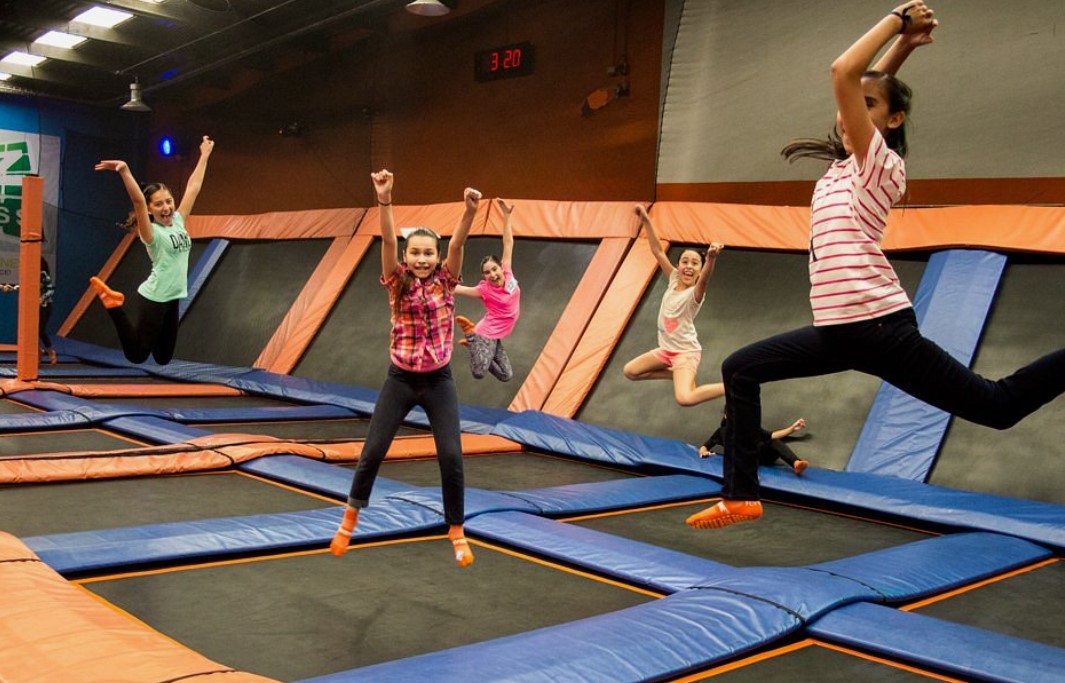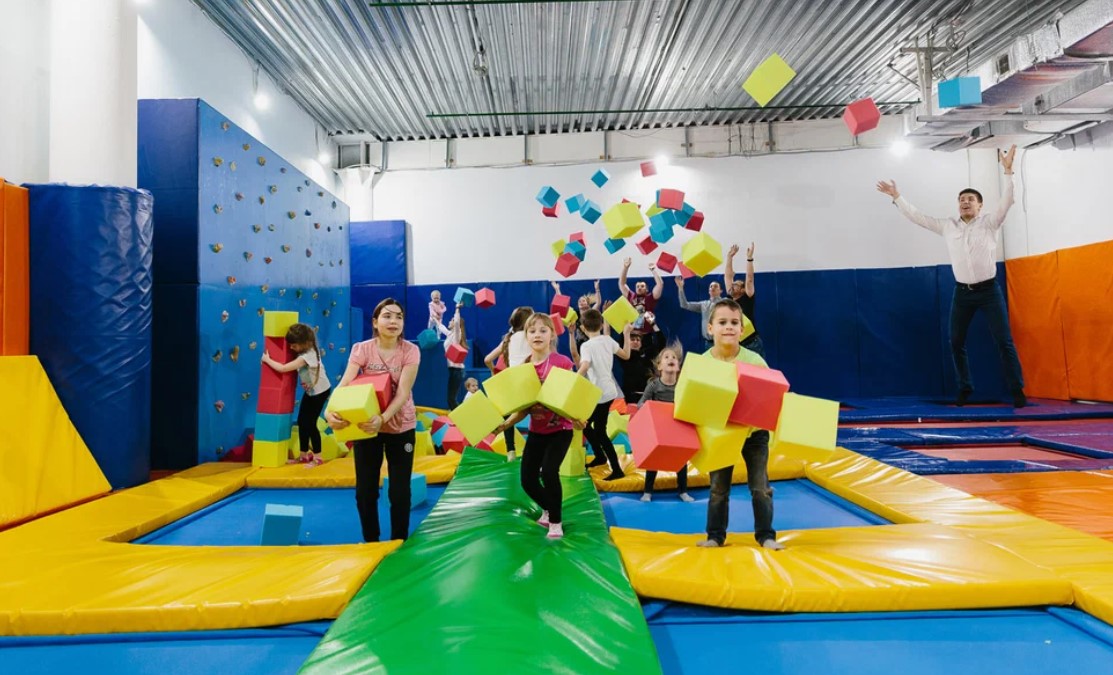Modern research in the field of child development underscores the pivotal role that physical activity plays in fostering a child’s intellectual and creative growth. Among the various forms of exercise, trampolines are not only a source of joy and entertainment but also a powerful tool for enhancing creativity, coordination, and overall development. In trampoline parks, alongside the soft play area, children are exposed to activities that require balance, agility, and motor skills, all of which contribute to their mental, emotional, and physical well-being.
Development of the Vestibular Apparatus
One of the most significant benefits of trampoline exercises is the development of the vestibular system, which is responsible for balance and spatial orientation. When children jump on trampolines, they experience moments of weightlessness followed by the re-application of gravity upon landing. This alternating state helps them learn to maintain control over their body in both normal and flight-like conditions. Such training of the vestibular system is crucial for improving a child’s sense of balance, body awareness, and control over their movements.
Uniform Muscle Development
Trampoline exercises involve the harmonious use of a wide range of muscle groups. This includes the core, legs, arms, and even smaller stabilizer muscles, all working together to maintain balance and execute jumps. For growing children, this kind of full-body engagement leads to even muscle development, which is essential for ensuring physical symmetry and avoiding issues like muscle imbalances that can affect posture and overall physical performance as they grow.

Positive Attitude Towards Sports
Trampoline parks offer children a fun, engaging way to stay active. By associating physical exercise with play and joy, these environments help foster a positive relationship with sports from an early age. The excitement of bouncing and jumping creates a pleasurable experience that can lead children to associate physical activity with positive emotions, increasing the likelihood of continued participation in sports and outdoor activities throughout their lives.
Development of Cognitive Mental Processes
Jumping on trampolines requires focus and concentration, which in turn stimulates cognitive development. The coordination needed to control body movements helps to engage the brain’s motor cortex, laying the foundation for enhanced memory, thinking, and imagination. The link between physical movement and mental agility is strong—children who engage in regular trampoline exercises often exhibit improved problem-solving skills and the ability to grasp complex concepts more rapidly.
Stimulation of Creativity
Creativity flourishes in trampoline parks, where children are encouraged to explore new ways of moving and interacting with their environment. Jumping requires coordination and spatial awareness, which not only strengthens motor skills but also encourages imaginative play. Through various trampoline games such as “creative flights” or “transformation jumps,” children are able to create new stories and characters, turning physical play into an outlet for creative expression.
Improvement of Learning Ability
Trampoline exercises increase oxygen supply to the brain, which enhances learning capacity. As children jump, their bodies and brains receive more oxygen, which is vital for cognitive processes such as memory retention and focus. Regular trampoline play can boost a child’s ability to absorb and retain new information, making it a helpful tool in educational development.
Normalization of Metabolic Processes
Trampoline activities are excellent for boosting metabolism. The high level of aerobic activity involved in trampoline jumping increases the body’s production of biologically active compounds, such as enzymes and hormones, that are essential for growth and development. These metabolic benefits can support healthy weight management and provide children with the energy they need for both physical and mental activities.
Development of Critical Thinking
Physical activities like trampoline jumping enhance cognitive abilities related to analysis, abstraction, and the formation of cause-and-effect relationships. Children learn to assess risks, control their movements, and adapt to changes in their environment, all of which contribute to the development of critical thinking skills. These abilities are crucial for success in both academic and everyday life.
Improvement of Sensory Perception and Mental Performance
Trampolines heighten children’s sensory perception, helping them become more attuned to their environment. As they engage in physical play, children improve their ability to process sensory inputs like sight, sound, and touch, leading to better mental performance and responsiveness in various situations.
Stress Resistance and Mood Enhancement
The joy and physical exertion of jumping on a trampoline trigger the release of endorphins, the body’s natural “feel-good” hormones. As children jump, their nervous system relaxes, providing an effective way to reduce stress and alleviate anxiety. This boost in mood helps children cope with the emotional challenges they may face, while also fostering a sense of happiness and contentment.

Brain Development and Speech Enhancement
The physical movement involved in trampoline play has a direct impact on brain development. The rapid contractions of muscles during jumping stimulate blood flow, including to the brain, increasing the oxygen supply and strengthening neural connections. For preschool-aged children, this increased brain activity can lead to improved memory retention, faster vocabulary expansion, and overall language development.
Strengthening Immunity and Overall Health
Beyond its mental and emotional benefits, trampoline play also strengthens the immune system. Regular physical activity improves cardiovascular health, enhances circulation, and helps regulate body temperature—all of which contribute to a stronger immune response. As a result, children who regularly engage in trampoline exercises may find themselves less susceptible to common illnesses and more capable of maintaining overall health.
Guidelines for Trampoline Park Participation
While the benefits of trampoline parks are numerous, it is essential to approach these activities with care, particularly for young children:
– Age Considerations: Children under three years old should avoid full-fledged trampoline activities, as their joints and ligaments are still developing. It’s better to start with short, simple games to allow their bodies to adapt over time.
– Safety and Training: For children over three, it’s crucial to use a well-equipped, specialized trampoline park where they can receive guidance from trained professionals. Proper instruction will help them avoid injuries like ligament sprains or dislocations, ensuring a safe and enjoyable experience.
– Adapting to Physical Limitations: Due to individual differences in vestibular sensitivity, some children may experience dizziness during their first sessions. It is important to allow time for adaptation and to avoid pushing them beyond their comfort limits.
– Fun First: Above all, trampoline activities should be enjoyable. Forcing a child to participate may cause them to develop a negative association with physical exercise, so it’s important to let them progress at their own pace.
Conclusion
Trampoline parks offer a dynamic and engaging environment for children to grow physically, mentally, and creatively. From improving balance and coordination to boosting cognitive development and imagination, trampolines provide a wealth of benefits that can positively influence a child’s overall development. When approached with safety and enjoyment in mind, trampolines can become an essential part of a child’s healthy lifestyle, promoting a love for movement that will last a lifetime.

Baseball fan, mother of 2, DJ, vintage furniture lover and creative consultant. Making at the intersection of art and programing to craft experiences both online and in real life. I’m a designer and this is my work.


